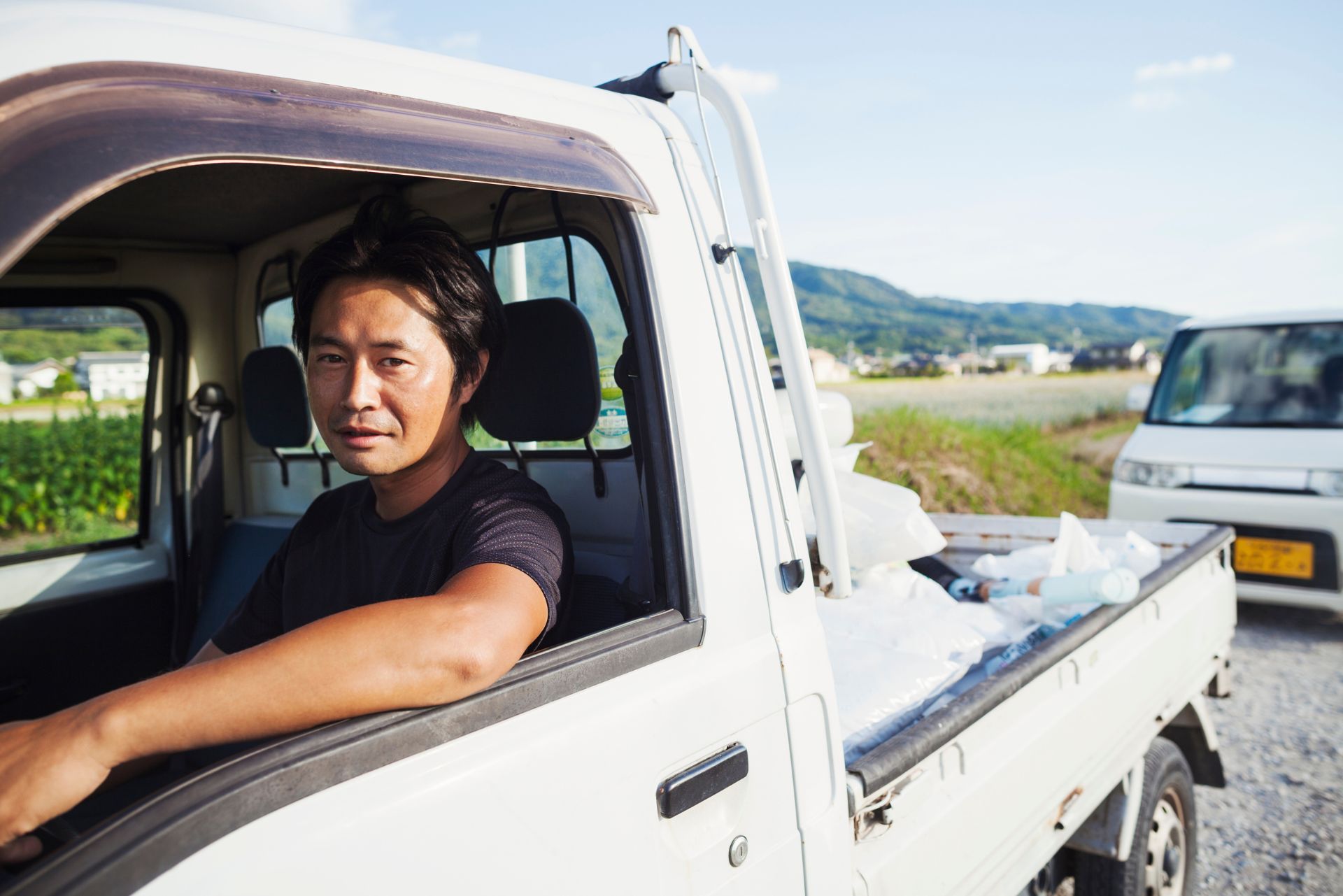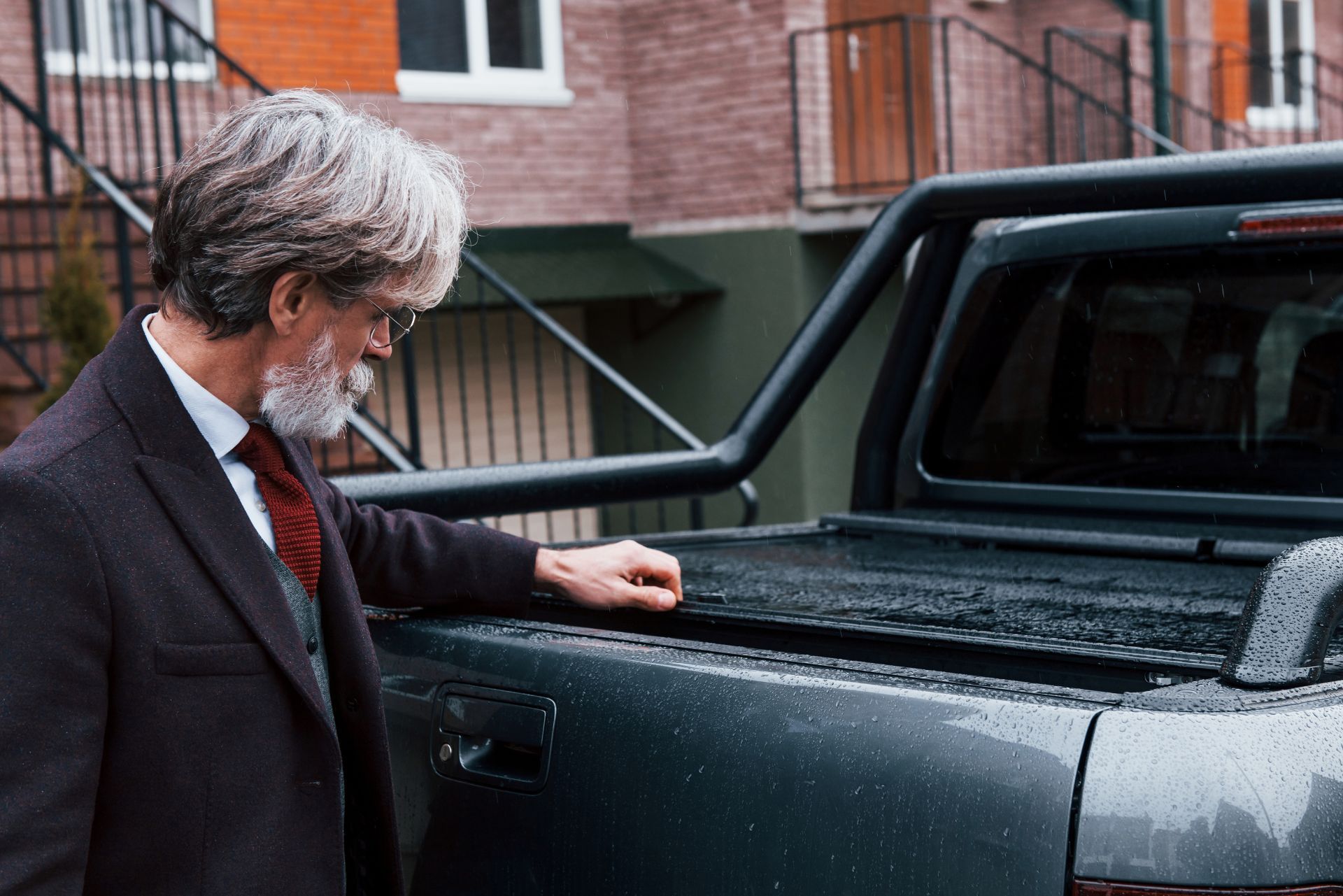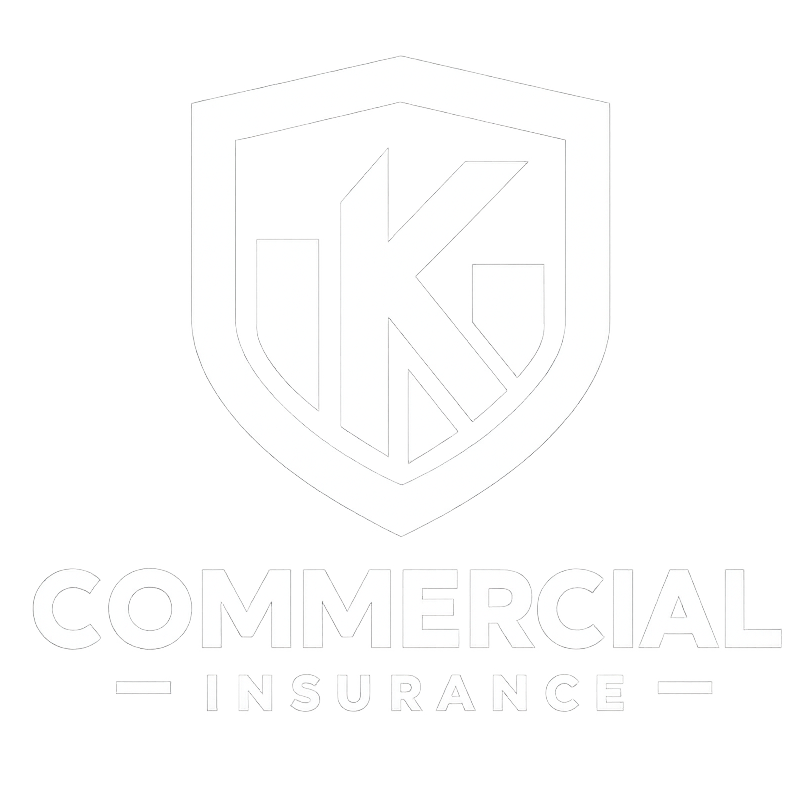Top 3 Recommended Policies

In the dynamic world of transportation, hot shot trucking has emerged as a popular choice for many entrepreneurs and businesses. This niche involves the expedited delivery of smaller loads, often requiring specialized insurance coverage. In Minnesota, understanding the ins and outs of hot shot trucking insurance is crucial for operators looking to protect their assets and ensure compliance with state regulations. This article dives deep into everything you need to know about hot shot trucking insurance in Minnesota.
What is Hot Shot Trucking?
Hot shot trucking refers to the transportation of smaller, time-sensitive loads that need to be delivered quickly. Unlike traditional freight services that may involve larger shipments, hot shot trucking typically uses medium-duty trucks and trailers to haul loads that can range from a few hundred to several thousand pounds.
This type of trucking is especially popular in industries such as construction, oil and gas, and manufacturing, where urgent deliveries can significantly impact operations. The flexibility and speed of hot shot trucking make it an attractive option for businesses that require immediate logistics solutions. In many cases, hot shot trucking serves as a critical lifeline for companies facing tight deadlines, ensuring that essential materials and equipment arrive on-site without delay. This immediacy can enhance productivity and minimize downtime, which is particularly vital in fast-paced environments.
Key Characteristics of Hot Shot Trucking
One of the defining features of hot shot trucking is its ability to provide expedited services. Operators often work on a load-by-load basis, which allows them to respond quickly to customer demands. Additionally, hot shot trucking typically involves shorter hauls compared to traditional freight, making it easier to manage schedules and routes. This agility not only benefits the truckers but also allows clients to plan their operations more effectively, knowing that they can rely on timely deliveries for their projects.
Another characteristic is the use of specialized equipment. Hot shot truckers often employ flatbed trailers, gooseneck trailers, or other types of transport that can accommodate various cargo types. This versatility is essential for meeting the diverse needs of clients across different sectors. For instance, in the construction industry, hot shot trucking can be used to transport heavy machinery or building materials that are crucial for ongoing projects. Furthermore, the ability to quickly adapt to different load requirements means that hot shot truckers can cater to a wide range of industries, from delivering medical supplies to transporting automotive parts, thereby expanding their market reach and service offerings.

The Importance of Insurance in Hot Shot Trucking
Insurance is a critical component of any trucking operation, and hot shot trucking is no exception. Given the nature of expedited deliveries, the risks associated with transporting goods can be higher than in standard trucking. This makes comprehensive insurance coverage not just a legal requirement but also a smart business decision.
Types of Insurance Coverage Needed
Hot shot truckers in Minnesota must consider several types of insurance coverage to protect their business. The most common types include:
- Liability Insurance: This is mandatory for all trucking operations. It covers damages or injuries caused to others in the event of an accident.
- Physical Damage Insurance: This protects the truck and trailer from damage due to accidents, theft, or vandalism.
- Cargo Insurance: Essential for hot shot trucking, this coverage protects the cargo being transported against loss or damage.
- Non-Trucking Liability Insurance: This covers incidents that occur when the truck is not being used for business purposes.
Legal Requirements in Minnesota
In Minnesota, all commercial vehicles, including those used for hot shot trucking, must meet specific insurance requirements set by the state. Operators are required to carry a minimum amount of liability insurance, which is currently set at $750,000 for general freight and $1 million for hazardous materials.
Additionally, it is crucial for hot shot truckers to comply with federal regulations, especially if they operate across state lines. The Federal Motor Carrier Safety Administration (FMCSA) sets forth additional insurance requirements that must be adhered to for interstate operations. This includes maintaining proper documentation and proof of insurance, which must be readily available for inspection during roadside checks.
Moreover, understanding the nuances of each type of coverage can significantly impact a hot shot trucking business's financial health. For instance, while liability insurance is essential, many truckers overlook the importance of cargo insurance, which can be a game-changer in protecting against the loss of valuable freight. With the increasing value of goods being transported, having adequate cargo insurance can save truckers from devastating financial losses in the event of an accident or theft. Furthermore, many insurance providers offer specialized policies tailored specifically for hot shot trucking, which can provide additional benefits and coverage options that standard policies may not include.
It’s also worth noting that the insurance landscape is continuously evolving, with new regulations and requirements emerging regularly. Hot shot truckers must stay informed about changes in both state and federal laws to ensure compliance and avoid potential fines. Engaging with an insurance expert who specializes in the trucking industry can provide invaluable insights and help operators navigate the complexities of their insurance needs, ensuring they have the right coverage to protect their business and livelihood.
Choosing the Right Insurance Provider
Selecting the right insurance provider is a vital step in securing hot shot trucking insurance. The right provider will not only offer competitive rates but also understand the unique needs of hot shot trucking operations.
Factors to Consider When Selecting an Insurance Provider
When evaluating potential insurance providers, consider the following factors:
- Experience in the Industry: Look for providers that specialize in trucking insurance and have experience with hot shot operations.
- Customer Reviews and Reputation: Research customer feedback and ratings to gauge the reliability and service quality of the provider.
- Coverage Options: Ensure that the provider offers a range of coverage options tailored to the specific needs of hot shot trucking.
- Claims Process: Investigate the claims process to ensure it is straightforward and efficient, as this can be crucial in times of need.
Getting Quotes and Comparing Policies
Once potential providers have been identified, obtaining quotes is the next step. It is advisable to request quotes from multiple insurers to compare coverage options and premiums. Pay attention to the details of each policy, including deductibles, limits, and exclusions.
Additionally, consider working with an insurance broker who specializes in trucking insurance. Brokers can provide valuable insights and help navigate the complexities of the insurance landscape, ensuring that the best options are considered.
Moreover, it is essential to evaluate the financial stability of the insurance provider. Check their ratings from independent agencies, as this can give you an idea of their ability to pay claims in the event of an accident or loss. A financially sound insurance company is more likely to remain in business over the long term, providing peace of mind that your coverage will remain intact.
Another important aspect to consider is the level of customer service offered by the insurance provider. A responsive and knowledgeable customer service team can make a significant difference, especially when you need assistance with policy details or during the claims process. Look for providers that offer multiple channels of communication, such as phone, email, and live chat, to ensure you can reach them easily whenever necessary.
Cost Factors for Hot Shot Trucking Insurance
The cost of hot shot trucking insurance can vary significantly based on several factors. Understanding these factors can help operators budget effectively and make informed decisions regarding their coverage.
Key Factors Influencing Insurance Costs
Some of the primary factors that influence the cost of hot shot trucking insurance include:
- Driving History: A clean driving record can lead to lower premiums, while a history of accidents or violations may increase costs.
- Type of Cargo: The nature of the cargo being transported can impact insurance rates. High-value or hazardous materials may require additional coverage and higher premiums.
- Truck Specifications: The make, model, and age of the truck can also affect insurance costs. Newer trucks with advanced safety features may qualify for discounts.
- Annual Mileage: The expected mileage for the year can influence rates, with higher mileage potentially leading to increased premiums.
Average Insurance Costs
While costs can vary widely, hot shot trucking insurance in Minnesota generally ranges from $3,000 to $7,000 annually for liability coverage. Additional coverage options, such as cargo insurance, can add to this cost. It is essential for operators to assess their specific needs and budget accordingly.
Moreover, the geographical area in which a hot shot trucking business operates can also play a significant role in determining insurance costs. Regions with higher traffic congestion or accident rates may see increased premiums due to the higher likelihood of claims. Additionally, certain states may have different regulatory requirements that can affect coverage options and costs. For instance, operators in urban areas might need to consider additional liability coverage due to the increased risk associated with navigating busy streets and highways.
Another important consideration is the choice of insurance provider. Different companies may offer varying rates and coverage options, so it is wise for operators to shop around and compare quotes. Some insurers may provide specialized hot shot trucking policies that cater specifically to the unique needs of this industry, potentially offering better coverage at competitive rates. Engaging with an insurance broker who understands the nuances of hot shot trucking can also help operators find the most suitable policy tailored to their operational requirements.
Understanding Coverage Limits and Deductibles
When selecting an insurance policy, understanding coverage limits and deductibles is crucial. These factors can significantly impact the out-of-pocket expenses in the event of a claim.
Coverage Limits Explained
Coverage limits refer to the maximum amount an insurance policy will pay for a covered loss. For example, if a liability policy has a limit of $1 million, the insurer will cover damages up to that amount. It is essential for hot shot truckers to choose limits that adequately reflect the value of their cargo and potential liabilities. Additionally, truckers should consider the types of cargo they transport, as certain goods may require higher coverage limits due to their value or the risks associated with their transport. For instance, transporting electronics or pharmaceuticals may necessitate limits that exceed those for general freight, given the higher stakes involved in potential loss or damage.
Deductibles and Their Impact
A deductible is the amount the insured must pay out of pocket before the insurance coverage kicks in. Higher deductibles typically result in lower premiums, but they also mean more significant expenses in the event of a claim. Operators should carefully consider their financial situation and risk tolerance when selecting a deductible amount. It's also worth noting that some insurance policies may offer a choice between different deductible options, allowing truckers to tailor their coverage to better suit their needs. For example, a trucker who has a solid financial cushion may opt for a higher deductible to benefit from lower monthly premiums, while someone with tighter finances might prefer a lower deductible to minimize their out-of-pocket costs in case of an accident. Understanding these nuances can help truckers make informed decisions that align with their operational strategies and financial goals.

Claims Process for Hot Shot Trucking Insurance
Understanding the claims process is vital for hot shot truckers, as it can determine how quickly and effectively they can recover from a loss. Each insurance provider may have a slightly different process, but there are common steps that typically apply.
Steps to File a Claim
When an incident occurs, the following steps are generally recommended:
- Document the Incident: Gather all relevant information, including photos, witness statements, and police reports if applicable.
- Notify Your Insurance Provider: Contact your insurer as soon as possible to report the incident and initiate the claims process.
- Provide Necessary Information: Be prepared to provide documentation and details about the incident to your insurer.
- Follow Up: Stay in communication with your insurance provider to ensure that your claim is being processed efficiently.
Common Challenges in the Claims Process
Hot shot truckers may encounter various challenges when filing claims, such as disputes over liability or delays in processing. To mitigate these issues, it is essential to maintain thorough documentation and communicate clearly with the insurance provider throughout the process.
Tips for Reducing Insurance Costs
While insurance is a necessary expense for hot shot truckers, there are several strategies that can help reduce costs without sacrificing coverage quality.
Implementing Safety Measures
Investing in safety measures can lead to lower insurance premiums. This may include equipping trucks with advanced safety technology, providing driver training programs, and maintaining a strong safety record. Insurers often reward operators who demonstrate a commitment to safety with reduced rates.
Bundling Insurance Policies
Many insurance providers offer discounts for bundling multiple policies. Hot shot truckers may benefit from combining their trucking insurance with other types of coverage, such as general liability or property insurance, to secure more favorable rates.
Regularly Reviewing Coverage
As the business evolves, so do the insurance needs. Conducting regular reviews of insurance coverage can help identify areas where adjustments can be made. This may involve increasing or decreasing coverage limits or switching providers to find better rates.
Conclusion
Hot shot trucking in Minnesota presents unique opportunities and challenges, particularly regarding insurance. Understanding the various aspects of hot shot trucking insurance— from required coverage types to cost factors and claims processes— is essential for operators looking to protect their business and comply with regulations.
By carefully selecting an insurance provider, understanding coverage limits, and implementing cost-saving strategies, hot shot truckers can navigate the complexities of insurance while ensuring their operations remain secure and efficient. With the right knowledge and preparation, hot shot trucking can be a rewarding venture in the vibrant Minnesota transportation landscape.
Contact Us

